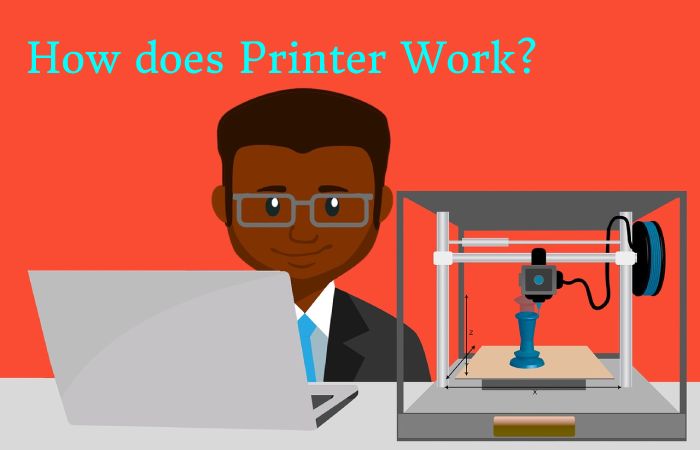Table of Contents
Introduction
The 3D printers are much more versatile and fun since they allow us to exploit our creativity without end. Although initially, they were costly and exclusive devices, which could only be found in laboratories, schools or design studios, today, they have become very affordable and within reach of almost anyone
How does Printer Work?

As we can guess from its name, a 3D printer is a device that allows us to make three-dimensional objects from a digital strategy. It is possible thanks to an additive business procedure in which thin layers of material are deposit from scratch until said three-dimensional object is achieve
Just as we can find different types of traditional printers, we can also find a variety of technologies in 3D printers.
The most recognized is the manufacture of fused filaments or modelling by fused deposition. In which a previously molten filament is deposit layer by layer through an extrusion nozzle.
The object to be create is trace on the surface of a sensitive photopolymer tank by projecting an ultraviolet laser. Then, the thing made as the polymer solidifies where the beam hits layer by layer.
What Materials do they Use?
The technique used by the 3D Printer will determine the material needed to print the three-dimensional object. And just as there is a wide variety of printing techniques. There is also a wide variety of materials that 3D printers use.
Although the best known are polymers and plastics. It is also possible to use metals (such as titanium, aluminium, stainless steel or welding), glass, plaster, resins, ceramics or even food.
What is a 3D Printer for?
We already know what a 3D printer is; engineers and designers use it to create prototypes or models quickly; in the automobile and aviation industry, they are use for the manufacture of parts. It is also being use in the fashion, decoration, leisure and art industries to create clothing, jewelry, toys, tools, or food.
The science sector is another one benefiting from everything that can be done with a 3D printer. Archaeology and palaeontology professionals are using 3D printers to reconstruct models of antiquities; while, in the medical sector, they are also use to print prostheses, grafts or even to recreate models of organs
How Long Time do They take?
There is no fixed time to print a 3D object; that will depend on the type of printing, the settings of the 3D Printer, the material or the size of the three-dimensional object that we want to create.
Another factor that influences the 3D printing time is the quality with which we want the object. The time required for a prototype will not be the same for a final product, which will need to be of higher quality.
Conclusion
They benefit from everything that is done with a 3D printer. For example, archaeology and palaeontology professionals are using 3D printers to reconstruct models of antiquities. In contrast, they are also use to print prostheses, grafts, or even recreate organ models in the medical sector.
